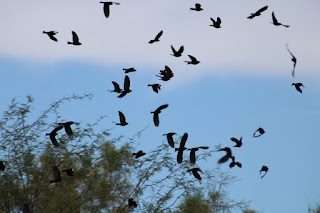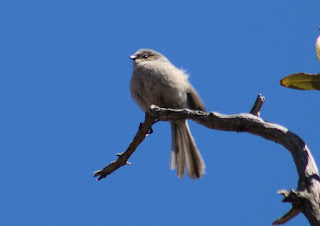Tres Rios Overbank 3.17.20
As a birder, you probably heard about this place and the various water wildlife it has. I can't say anything against that because I know its true but I didn't have the most productive day (which I can expect from any place because birding is a hit or miss.) One thing you need to know before coming here is that you need a permit which can easily be accessed and retrieved.... here's the link: Tres Rios Overbank Access Permit This place is known for it's diversity... especially in waterfowl. It's also a great place to go to see the usual desert birds such as cactus wrens, gnatctachers, verdin, and you might even be lucky enough to see some owls. When preparing for my trip I also included a "checklist" withe the birds I wanted to see... yellow-headed blackbird, blue-winged teal, american white pelican, sora, virginia rail, marsh wren, and many others. That's why I considered this day unlucky, as I only saw two from my checklist. But I learned an important thing... in order to get the best chance of seeing waterfowl and water wildlife, you need to bird early.... just as a usual birding trip. This is because that is when all the rails and egrets and herons are all fishing right at dusk. So I went on and off I went. When I first arrived there the first thing I saw where several AMERICAN WHITE PELICANS circling above the wetlands. When coming here you need to know that you are only permitted to bird at the overbank (with a permit of course) but you cannot bird at the actual wetlands restoration. I didn't have enough time to bird along the wetlands which is permitted along the fences but I highly regret that and highly recommend doing that for the best experience. Birding along the trail at overbank is quite easy... it isn't paved but it isn't rocky either. Ok now back on track.. As I was birding along the trail the first thing I saw was a muskrat. At that was actually my first time seeing one... fat rat like creature that looks like a hybrid between a beaver and an otter. As I was walking a lot of sounds filled the air.. from the rushing water to a squabble of egrets. As I was patiently waiting to find the marsh wren and the rails what I did find were several SONG SPARROWS, these birds are very abundant. More walking lead me to a clearing and marsh. This is probably where I saw the most waterfowl ranging from COMMON GALLINULES to AMERICAN COOT, LESSER SCAUPS, PIED-BILLED GREBES, CINNAMON TEALS, and AMERICAN WIGEONS. I spent some time there and off I went back to the car. More song sparrows but also a flock of .... YELLOW-HEADED BLACKBIRDS. These gregarious passerines are truly a sight to see especially a whole flock of them! With their striking bold golden yellow heads to their sleak black coat and pronounced white feathers especially seen in flight. But one thing I missed, was a good photograph. I got blurry pics of them fying but I wanted much more. That's why going there early is key. Coming back on the trail, I payed more attention to the other side where ther was desert life. HOUSE FINCHES, VERDIN, and BLACK-TAILED GNATCATCHERS were abundant. CURVE-BILLED THRASHERS were also seen at multiple places foraging in the litter with WHITE-CROWNED SPARROWS accompanying them. But another awesome thing was a few
CLIFF SWALLOWS that surprised me at the car buzzing around for insects. I also saw an OSPREY that was fishing. This ended the trip perfectly and I can't wait to go again. Truly a memorable place not only for birders but more importantly for the birds that can call this sanctuary home.
CLIFF SWALLOWS that surprised me at the car buzzing around for insects. I also saw an OSPREY that was fishing. This ended the trip perfectly and I can't wait to go again. Truly a memorable place not only for birders but more importantly for the birds that can call this sanctuary home.
American White Pelican
Cliff Swallow
Yellow-Headed Blackbird
Osprey
Song Sparrow
Muskrat
Cinnamon Teal
Common Gallinule
Lesser Scaup
Pied-Billed Grebe




















Comments
Post a Comment